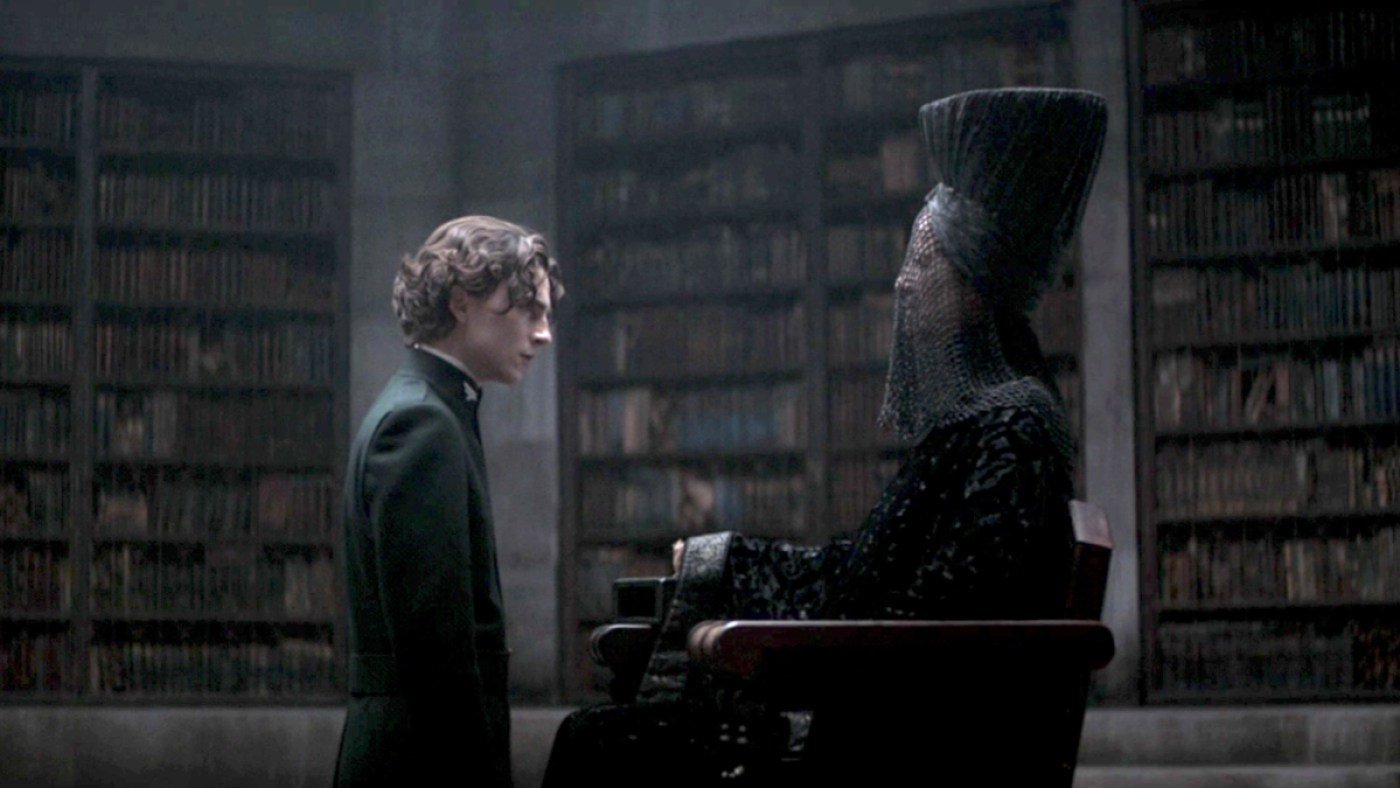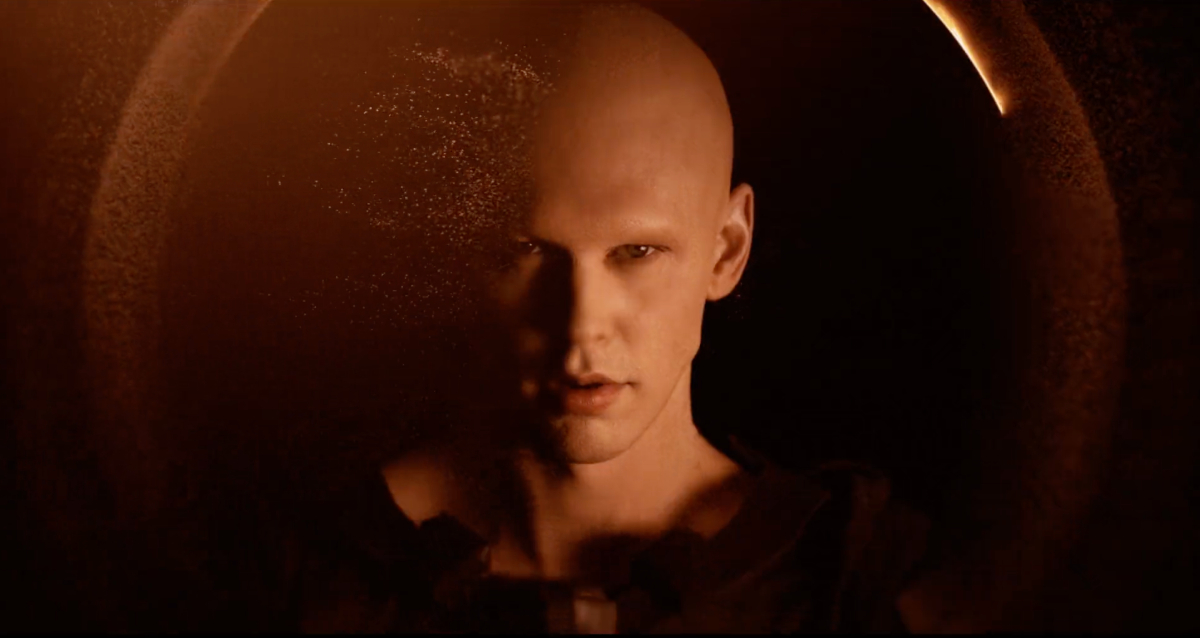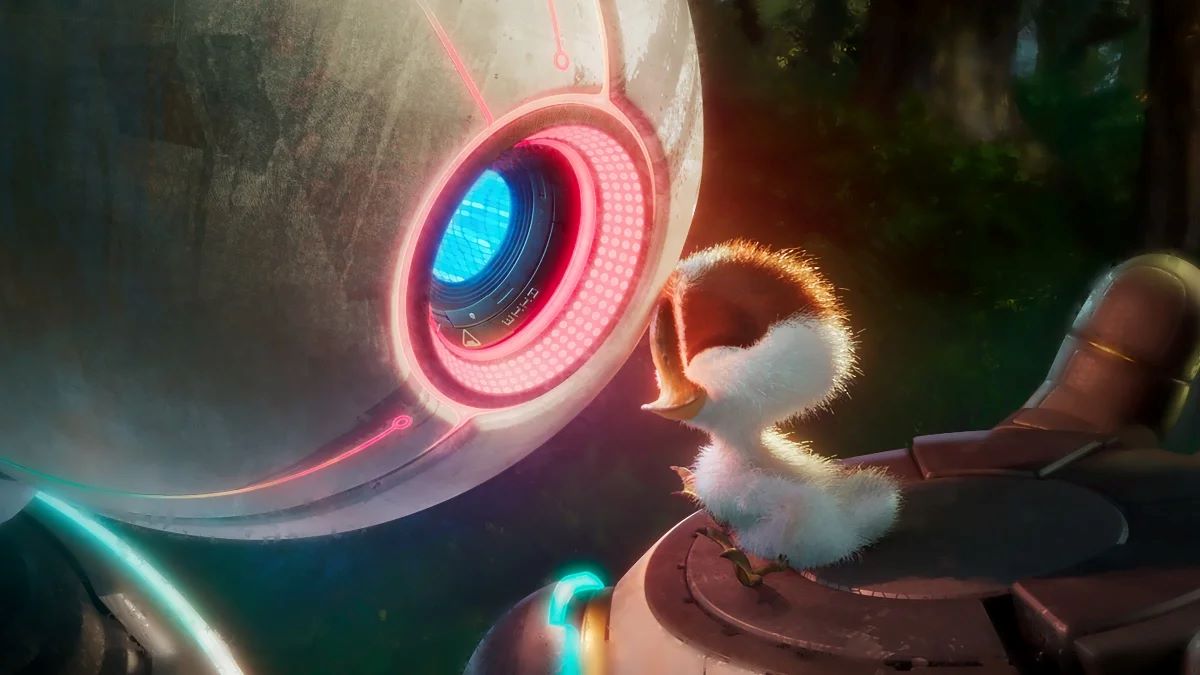With Dune: Part Two officially in cinemas everywhere, it’s safe to say that Dune fever is holding pop culture in a chokehold and I personally couldn’t be happier about it—I mean, I myself have gone to see it in theaters three times already. It’s all I’m thinking about.
We all imagined this movie, covering the second half of Frank Herbert’s iconic space opera, was going to be incredible considering the work director Denis Villeneuve had done on Dune: Part One and honestly, what is currently playing in theaters is all we could have hoped for and more.
Honestly, there was just one thing missing from the first part of Denis Villeneuve’s take on Dune: a truly iconic and unhinged villain who everyone loves to hate. Of course, we had Stellan Skarsgård’s Baron Harkonnen in Dune: Part One, orchestrating the fall of House Atreides with no small help from the galactic Emperor himself, and his brutal nephew Glossu “Beast” Rabban, played by Dave Bautista.

But still, we didn’t see that much of them in the grand economy of the movie, which was of course more focused on the Atreides story and Paul’s first encounter with the Fremen. And while the Harkonnens’ character design makes them quite impossible to miss and to forget, neither of them had that “oomph” of truly unhinged villainy. With good reason; Villeneuve was clearly saving that for Part Two.
This is the movie that introduced to us Feyd-Rautha Harkonnen, brought to the screen once before by Sting in David Lynch’s 1984 adaptation of Dune with a very distinctive character design—that red hair, especially. Austin Butler, who won a Golden Globe for playing the titular role in Elvis, has taken on the role of Feyd-Rautha in Dune: Part Two.
Like Sting, Butler also has that character design on lock—very different from the 1984 version, of course, but equally striking, which is exactly what you need to make your villain memorable. And oh, what a villain he is. Even with a bald cap that goes down to his eyebrows, the power of Feyd-Rautha’s unhingedness is strong enough that my TikTok FYP is already filled with his fancams. But maybe that says more about how I trained my algorithm.
So let’s take a closer look at what kind of character Feyd-Rautha Harkonnen is, and what we can expect from him as Dune: Part Two moves closer to its release date.
So who exactly is Feyd-Rautha Harkonnen in the Dune book?
Feyd-Rautha Harkonnen is the youngest of Baron Vladimir Harkonnen’s two nephews and the one he has chosen as his heir—which is also why Feyd-Rautha and Glossu do not share the same surname. Raised on the Harkonnens’ homeworld of Geidi Prime, Feyd-Rautha grew up to be charismatic, calculating, capable, and ruthless in a much different way than his brutal older brother—something that made Feyd-Rautha a favorite of the Baron and secured his position as heir, as well as his leading role in the Baron’s schemes of power.
The other thing that’s important to know about Feyd-Rautha is that he, too, is a product of the centuries-long breeding program that the Bene Gesserit have orchestrated throughout the Empire. The original plan was for the Kwisatz Haderach (the Sisterhood’s prophesied savior) to be born out of the union of the Houses Atreides and Harkonnen, thus also resolving the blood feud between the two—which is why Lady Jessica was supposed to have a daughter.

As we learned in Dune: Part One, however, when the Reverend Mother Gaius Helen Mohiam (Charlotte Rampling) visited Lady Jessica (Rebecca Ferguson) on Caladan before the family left for Arrakis, Jessica decided to go against the Bene Gesserit’s schemes and follow Duke Leto’s wish of having a son. Obviously, Feyd-Rautha and Paul are now headed toward an inevitable clash.
What will happen to Feyd-Rautha in Dune: Part Two?
There’s so much I’d like to say about Feyd-Rautha’s portrayal in Dune: Part Two, but there’s no talking about it without spoiling much of the experience of seeing him in action on the big screen. So if you still haven’t seen Dune: Part Two and would like to go into it with as little spoilers as possible—even though it’s all the Internet is talking about—then I suggest you stop reading now.
When your villain’s introduction is a brutal gladiator fight in a monumental arena where he happily slaughters three men in what is his birthday present for his coming of age, you know you’re in for something good. Add to that the fact that Feyd-Rautha laughs out loud when he’s moments from death, has a posse of cannibal girls he carries around the galaxy with him, and kisses his uncle on the mouth—truly the stuff that makes for great villains that you just know are going to become the Internet’s problematic faves real fast.
Honestly, all there is to know about him is summed up in what Florence Pugh’s Princess Irulan replies when the Revered Mother tells her Feyd-Rautha is the sisterhood’s contingency plan now Paul Atreides can no longer be controlled. “Feyd-Rautha? He’s psychotic”. He certainly is and we love him for it.
Austin Butler’s performance is truly something for the ages. He manages to be one of Dune: Part Two’s most iconic and unforgettable performances—in a movie that is jam-packed with them—in the relatively limited amount of screen time allotted to him. The final duel between Paul and Feyd-Rautha is incredible. I can already hear the writers over at Archive of Our Own sharpening their keyboards. Truly one of the best villains of recent years.
What were the changes between the character in the book and the one in the movie?
Denis Villeneuve changed a great deal of the source material when making Dune: Part Two—all excellent changes, in my opinion, that make the adaptation that much more powerful without ever compromising on the original spirit of Frank Herbert’s novel. And those changes impact Feyd-Rautha’s storyline as well.
While Lady Margot—played by an always stunning Léa Seydoux—is indeed sent by the Bene Gesserit to test Feyd-Rautha and gather his genetic heritage by conceiving a daughter with him, in the book she also implants him with a seed of weakness, a word of command that would physically lock his muscles and render him immobile.
The Bene Gesserit offer this word to Paul to use during his final duel to easily prevail over Feyd-Rautha, but Paul ends up deciding against using it—otherwise, he would have owed his victory to the sisterhood and be in their debt, which is not exactly a comfortable place to be.
Then there’s the fact that a good chunk of Feyd-Rautha’s original storyline includes Thufir Hawat, the Mentat in the service of House Atreides who is now a prisoner of the Harkonnens. The Mentat preys on Feyd-Rautha’s bottomless desire for power, managing to almost get both the na-Baron and the Baron killed. Sadly, Thufir Hawat, who was played in Dune: Part One by Stephen McKinley, was cut from Dune: Part Two, something that Villeneuve himself describes as necessary but incredibly sad.

(featured image: Warner Bros)









Published: Mar 6, 2024 06:55 am